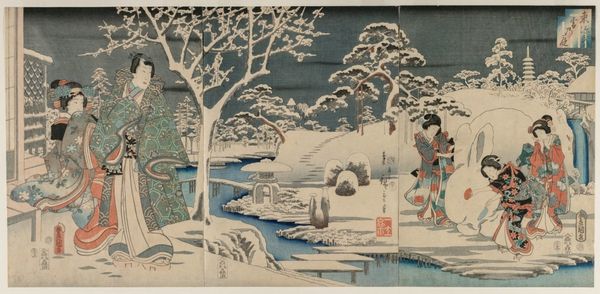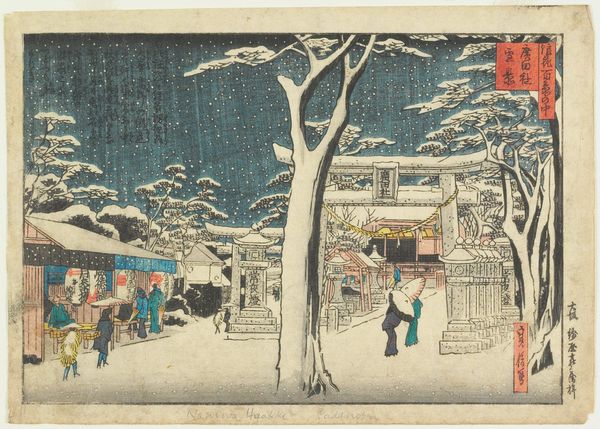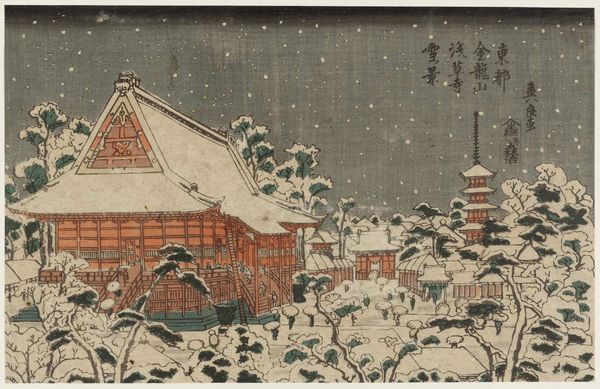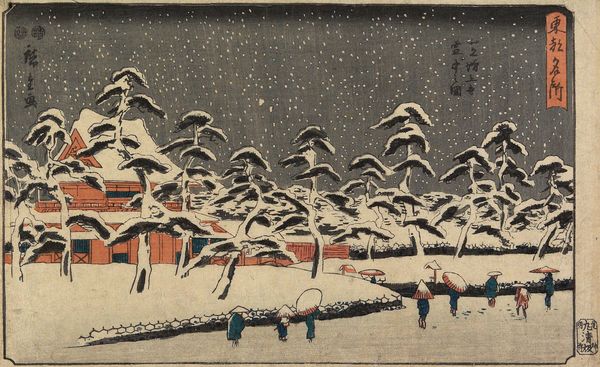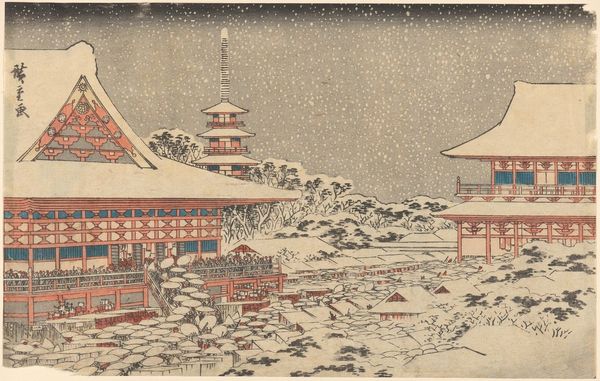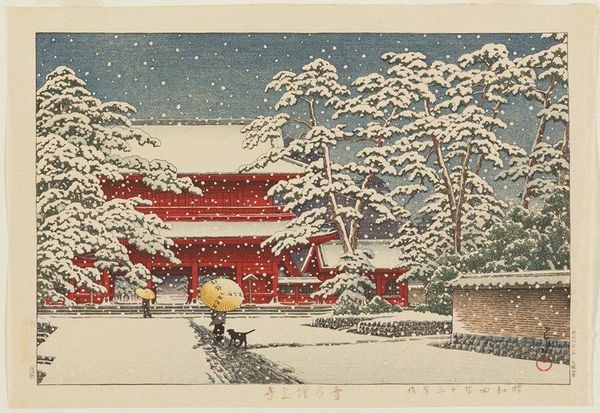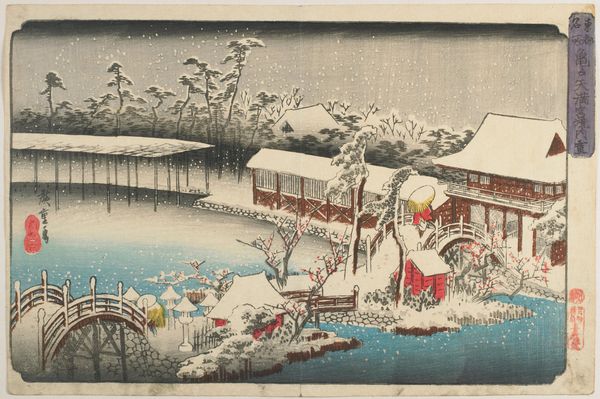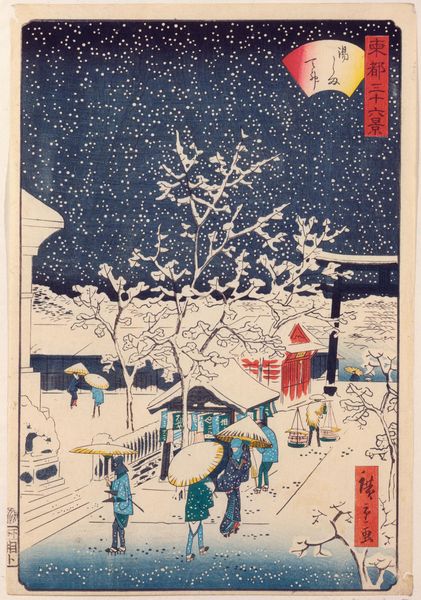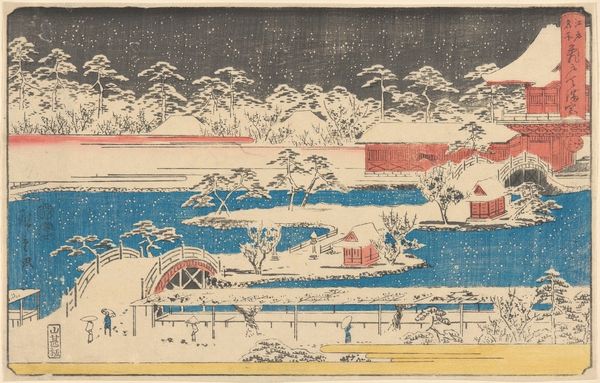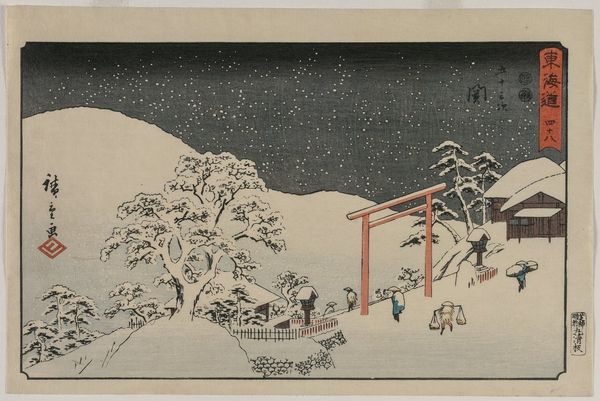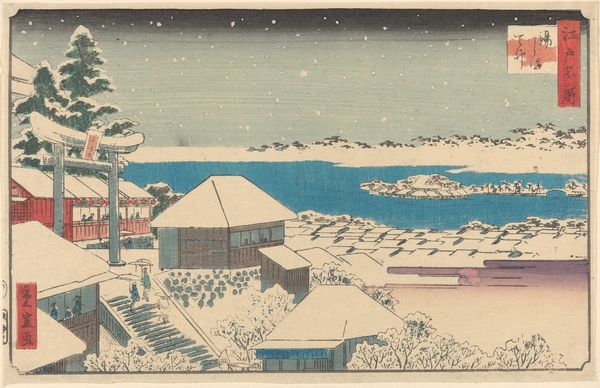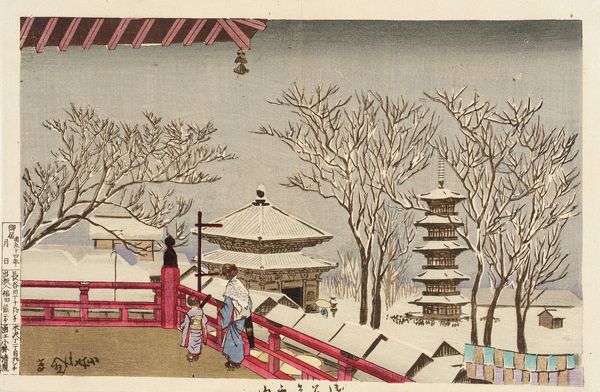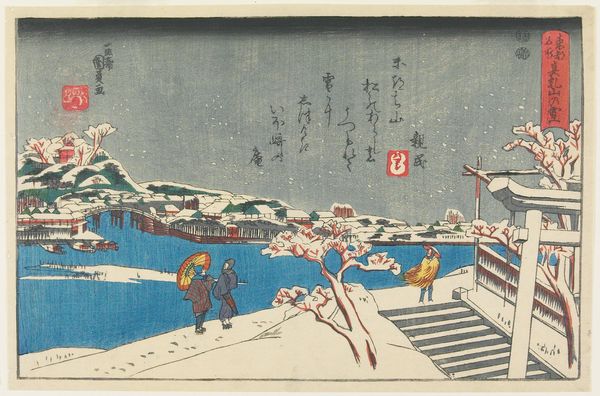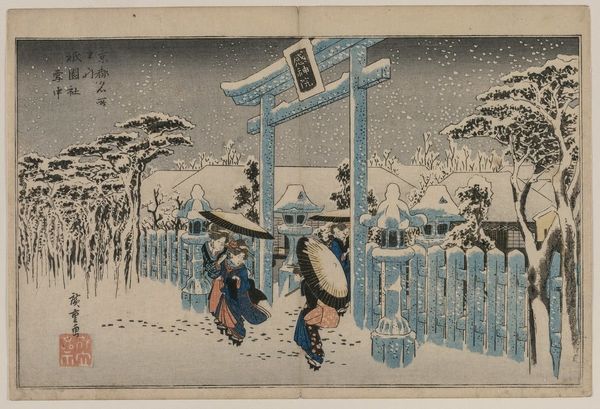
print, ink, woodblock-print
#
water colours
# print
#
asian-art
#
landscape
#
ukiyo-e
#
ink
#
woodblock-print
Dimensions: 8 7/8 × 11 3/16 in. (22.5 × 28.4 cm) (image, sheet, uchiwa-e)
Copyright: Public Domain
Curator: Brrr, you can practically feel the winter air radiating from this print, can’t you? It's Hiroshige's "Kinryūzan Temple at Asakusa", believed to be made sometime between 1852 and 1857. Editor: Absolutely, there’s an interesting tension here, isn't there? The composition pulls us into this scene of apparent serenity while also subtly alluding to social structures. This wasn’t just a picturesque landscape, but a powerful statement on cultural identity. Curator: Exactly! The way Hiroshige uses the woodblock to depict snow is quite marvelous— almost playful. Each flake seems to dance across the paper. I'm reminded of haikus. Moments frozen in time... Editor: That playful dance also speaks to labor— the laborious and painstaking carving that creates such fleeting beauty. Who were the people involved? Where are they in this representation? Ukiyo-e often glosses over these nuances, centering the pleasure of the viewer. Curator: Perhaps, but I see something almost democratic in that broad appeal. Anyone could appreciate the beauty, regardless of their background. And the limited color palette! Just a few carefully chosen hues, yet they create such depth. Editor: Color serves specific functions here; it signifies the political as much as it reflects some innocent observation of natural landscapes. That careful deployment masks a strategic use of symbolism deeply enmeshed within class distinctions of the time. The stark white reminds us of a blank canvas, suggesting endless possibilities but also mirroring the erasures of cultural narratives, or their reshaping in art like this. Curator: Still, it offers a momentary escape, a reminder of the quiet beauty that can be found even in the heart of a bustling city. Looking at it now, I can almost hear the soft crunch of snow underfoot. Editor: And to hear is to also start listening, critically, to who has been kept silent and where. In a piece like this that both conceals and reveals, the snow itself is covering certain realities, right? How it makes absence a form of presence? Curator: A powerful way to think of it. I appreciate how this piece encourages us to see familiar spaces anew— to reconsider the beauty and the inherent, embedded cultural forces simultaneously. Editor: Precisely! Recognizing art’s political nature opens us to a dialogue, questioning both the narrative and its silences. And understanding these perspectives can truly change how we experience a single artwork.
Comments
No comments
Be the first to comment and join the conversation on the ultimate creative platform.
